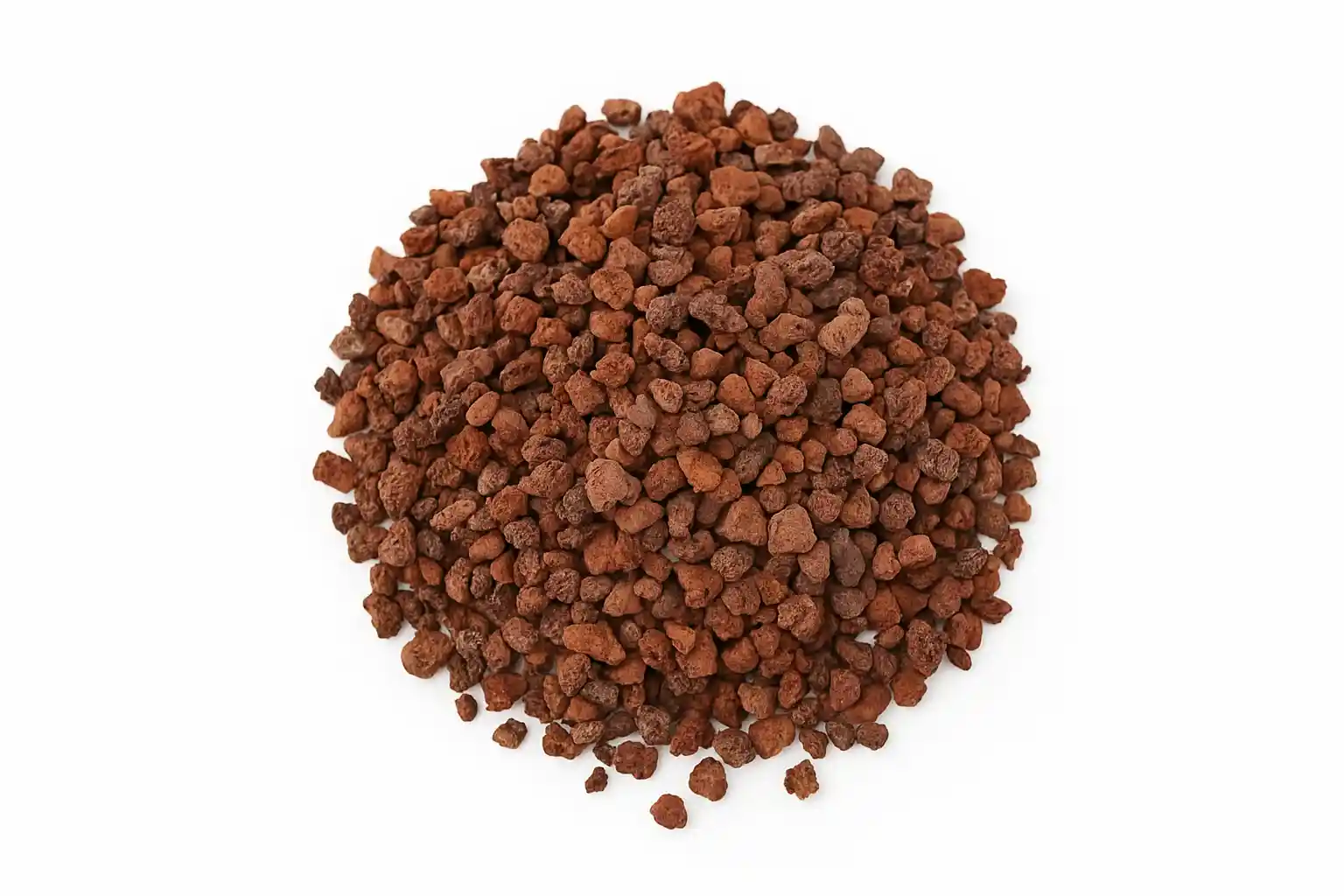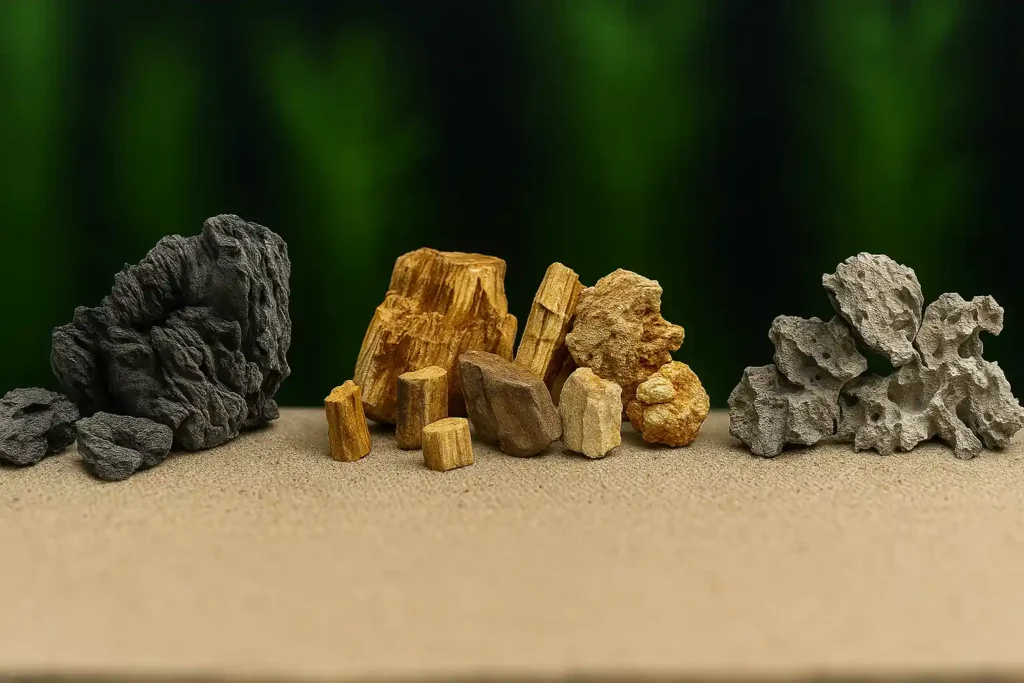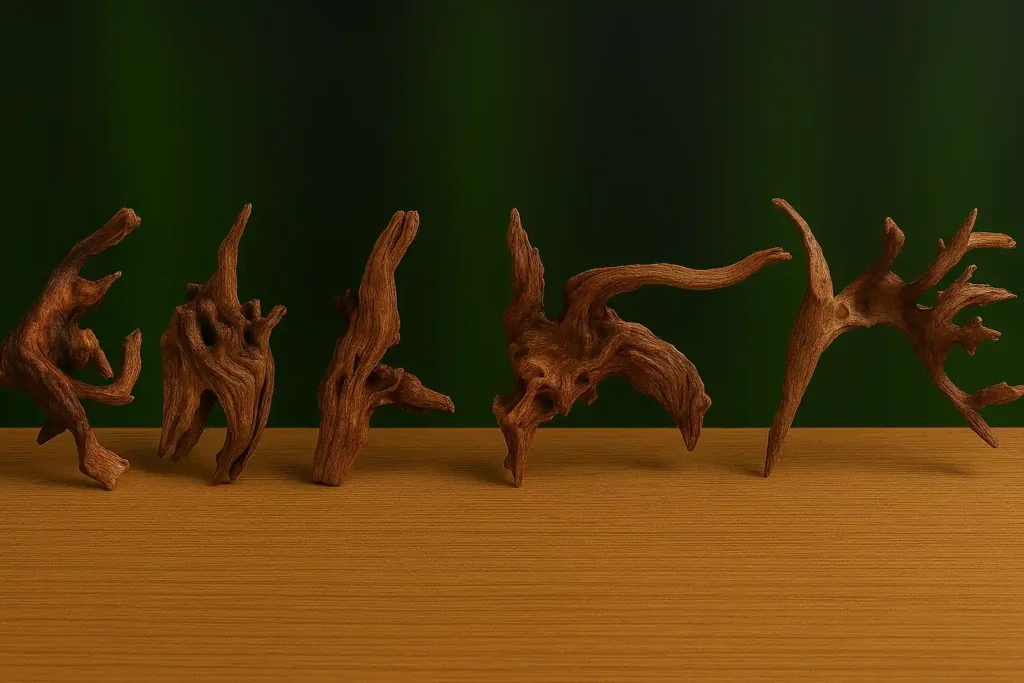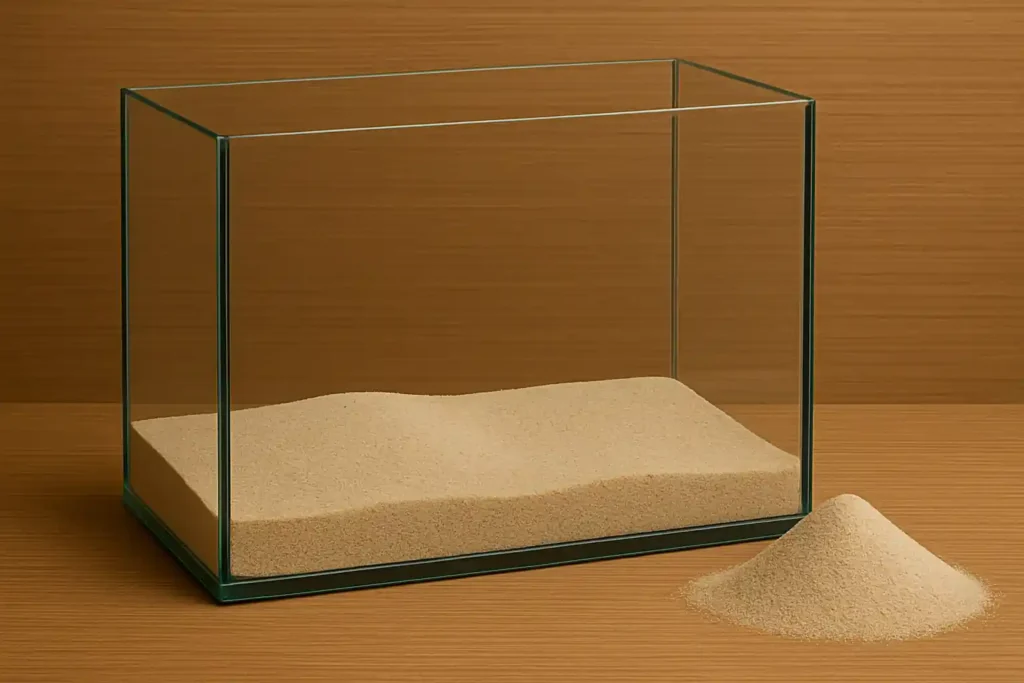
Aquarium Lava Granules Guide: How to Use Lava Rock as a Foundation Layer in Aquascaping
Introduction
When building a thriving aquascape, the foundation matters — literally. Aquarium lava granules, often referred to as lava rock pebbles or volcanic substrate, serve as the hidden powerhouse beneath your planted aquarium. Lightweight yet porous, these natural stones offer structural stability, excellent drainage, and biological filtration — making them a go-to choice for professional aquascapers.
In this comprehensive guide, you’ll learn why lava granules are more than just a layer of rock, how to use them effectively, and how they compare to other substrate systems.
What You’ll Learn in This Lesson
- What aquarium lava granules are and their benefits
- How they improve root health and water circulation
- Where to position them in your substrate layout
- Differences between lava granules and other substrate bases
- Step-by-step installation for new tanks
- Best practices for layering with nutrient-rich soil
- Maintenance, cleaning, and long-term care
- Eco-benefits of using volcanic substrate
- Where to buy high-quality lava granules
- Common mistakes to avoid
What Are Aquarium Lava Granules?
Aquarium lava granules are small pieces of natural volcanic rock — usually 3–8 mm in diameter — that serve as the base layer in planted aquariums. They are highly porous, allowing water and oxygen to circulate freely through the substrate.
Key Properties
- Porous structure: Ideal for housing beneficial bacteria
- Lightweight: Reduces total tank weight while offering stability
- pH-neutral: Doesn’t alter water chemistry
- Inert: No unwanted nutrients or chemicals
Benefits of Lava Granules in Aquascaping
- Root Oxygenation: The porous nature improves airflow and prevents anaerobic zones.
- Nutrient Retention: Acts as a sponge, helping upper substrate retain nutrients longer.
- Stability: Keeps upper soil layers from compacting or shifting.
- Biological Filtration: Surface area promotes colonization of nitrifying bacteria.
How to Use Lava Granules as a Substrate Base
Step-by-Step Setup
- Clean the Lava Granules: Rinse thoroughly to remove dust.
- Layer the Base (2–4 cm): Spread evenly across the tank bottom.
- Add a Separation Layer (optional): Fine mesh or fleece to prevent soil mixing.
- Add Nutrient-Rich Soil or Sand: Cap with 3–5 cm of active soil or decorative substrate.
- Hardscape and Planting: Proceed as usual.
Pro Tip: Slope the lava granules higher in the back to help with aquascape perspective.
Lava Granules vs. Other Substrate Foundations
| Feature | Lava Granules | Pumice | Gravel |
|---|---|---|---|
| Porosity | High | Very High | Low |
| Weight | Light | Ultra-light | Heavy |
| Root Health | Excellent | Excellent | Poor |
| Bacteria Colonization | High | High | Low |
| Cost | Moderate | Moderate | Low |
Choosing the Right Lava Granules
What to Look For
- Particle Size: 3–8 mm ideal for base layer
- Color: Ranges from dark brown to black
- Cleanliness: Pre-washed options save setup time
- Uniformity: Even granule sizes for better layering
Best Practices for Layering and Stability
- Use a separation mesh above lava granules when using fine soil.
- Avoid layering too thick — 2–4 cm is optimal.
- Compact lightly to prevent sudden collapse.
Maintenance and Cleaning Tips
- Initial Cleaning: Rinse before use to remove debris.
- Long-Term Maintenance: Lava granules don’t need replacement unless disturbed.
- Vacuuming: Avoid deep substrate vacuuming to maintain bacterial colonies.
Compatible Tank Types
- High-tech aquascapes
- Nature-style planted tanks
- Biotope tanks with soil layering
- Tanks with heavy root feeders (Cryptocoryne, Echinodorus)
Using Lava Granules in Shrimp Tanks
- Safe for shrimp — inert and stable
- Beneficial bacteria support biofilm development
- Avoid sharp edges; choose rounded granules
Environmental and Sustainability Benefits
- Sourced from natural volcanic deposits
- Requires no chemical processing
- Long lifespan = less waste
- Often locally available
Where to Buy Aquarium Lava Granules
- Aquascaping retailers (e.g., Aquasabi, ADA dealers)
- Online aquarium stores
- Landscaping suppliers (check purity)
Always ensure the lava rock is aquarium-safe and free from additives.
Common Mistakes to Avoid
- Using unwashed or dusty lava rock
- Overfilling with lava, reducing root soil depth
- Skipping the separation layer, causing mixing
- Using lava granules as a top layer — not visually appealing
Aquarium Lava Granules in the Context of Full Substrate Systems
Many professional aquascapers use a 3-layer system:
- Base Layer: Lava granules (oxygenation and stability)
- Nutrient Layer: Aqua soil with minerals
- Cap Layer: Sand or decorative gravel
This structure allows for optimal plant health, water clarity, and scaping flexibility.
Popular Brands and Alternatives
- Tropica Substrate
- JBL Volcano Mineral
- ADA Power Sand
- Seachem Flourite (less porous)
DIY Tips and Customization
- Use mesh laundry bags for localized lava zones
- Mix with pumice for ultra-light builds
- Combine with root tabs for added nutrients
Visual and Aquascaping Considerations
- Invisible when capped — focus on function
- Helps retain slope shape in Iwagumi or Dutch layouts
- Can anchor hardscape elements
Conclusion
Aquarium lava granules are one of the most underrated yet essential tools in professional aquascaping. Their unique properties improve plant health, structural integrity, and biological balance — all while remaining hidden beneath your layout. If you’re aiming for a thriving aquascape with longevity and minimal issues, start with a solid foundation — start with lava granules.
💬 Join the Conversation
Tag us on Instagram @AquariumLesson — we’d love to see your Aquarium!
👉 Do you use lava granules in your tanks? What difference have they made?
FAQ
Are lava granules safe for all aquarium fish?
Yes, as long as the pieces are smooth and don’t trap fish.
Can I use lava granules without soil?
Yes, but they lack nutrients — pair with root tabs or fertilization.
Do lava granules alter pH?
No, they are inert and pH-neutral.
How long do lava granules last?
Indefinitely — they don’t break down over time.
Should I replace lava granules when resetting a tank?
Only if heavily contaminated; otherwise, rinse and reuse.
References
- The Hidden Benefits of Lava Rock in the Aquarium – Aqua Essentials
Discusses porosity, bacterial colonization, and safety of lava rock in tanks. - Building up Substrate with Crushed Lava Rock – r/Aquascape
User experiences confirming lava rock is great for elevation and beneficial bacteria. - Using Volcanic Rocks as a Base Layer – Aquatic Plant Central
Highlights its benefit for stability under aquascaping soil. - Lava Rocks as Substrate – r/PlantedTank
Practical advice from aquascapers on using lava rock as substrate and filter media.



